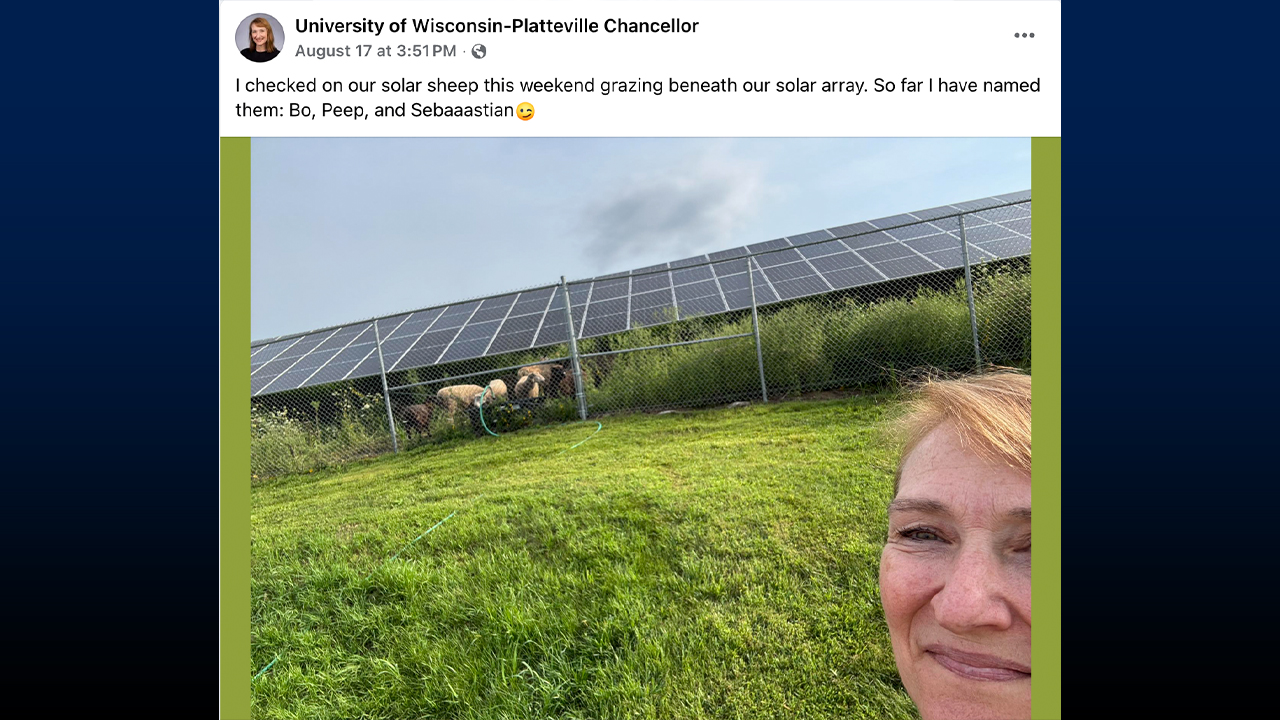


A new, eco-friendly partnership is taking shape on campus, as 20 head of sheep have been brought in to graze beneath and around the university’s solar array. This natural approach to vegetation management is being implemented over approximately seven acres. The sheep will help control grass and plant growth through the end of the growing season, which is expected to be when the grass goes dormant this fall.
The grazing effort is supplied and managed by local farmer Ross Christensen, who works in Facilities Management for the university and who is collaborating with the campus and the School of Agriculture to ensure the success of the initiative. Sheep offer a natural, cost-effective alternative to traditional landscaping by grazing on weeds and grass—even on steep or uneven terrain. While using grazing as a vegetation control method is not a new concept, it is the first season the plan is being fully realized at the University of Wisconsin-Platteville.
“Sheep are grazers so the solar field provides an excellent source of food without the need to supplement their diet," explained Christensen. "When they’re not at the university, the sheep stay at my family’s hobby farm in Ellenboro, where they’re cared for by my wife, daughters and me."
The benefits are already becoming clear. In addition to reducing the need for mechanical mowing, the sheep provide a sustainable solution that supports soil health and biodiversity. Campus staff is also freed up to focus on high-visibility areas more frequently used by the public.
“My counterparts across the Universities of Wisconsin are eager to see how this innovative method of vegetation control performs in our solar array,” said Chief Facilities Officer Peter Davis. “It promises to save us valuable staff hours, time that can be redirected toward enhancing other high-traffic areas of campus that directly serve our students and visitors.”
Davis noted the sheep’s unique role on campus with a laugh: “The sheep are contract ‘employees’ of the university,” he said. “Contracted to eat.”
The herd has also caught the attention of campus leadership—Chancellor Tammy Evetovich not only paid them a visit but also shared a Facebook post, giving names to a few: Bo, Peep and Sebaaastian.
The sheep, though humble in size and demeanor, are now vital members of the campus community, quietly working behind the scenes (or under the panels) to keep the solar investment running efficiently and naturally. Truly, a sheep in lawnmower’s clothing.
Solar Array
Completed in August 2022, the solar field generates 3.3 million kilowatt-hours of electricity annually—enough to power 250 homes each year. Representing a $3.4 million investment, the project reflects the university's commitment to sustainability, environmental responsibility and a healthier planet. The electricity produced by the solar array accounts for approximately 15% of the university’s total annual electricity consumption.
About SRES at the University of Wisconsin-Platteville
UW-Platteville is proud to be one of the only colleges in the United States that offers four-year degrees in Sustainability and Renewable Energy Systems (SRES).